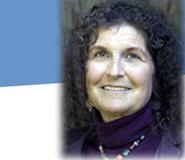
Dr. Arlene Blum, executive director of the Green Science Policy Institute and a biophysical chemist, lectured about health risks associated with the widespread use of chemical flame retardants on Oct. 19 in the Science Center’s Kennedy Auditorium. The lecture was sponsored by the Chemistry Department and Outdoor Leadership Center.
Through a series of images and anecdotes, Blum painted a comprehensive picture of how chemistry and mountain climbing combine to play an important role in her hopes to influence environmental public policy. She began by describing her educational background and interest in chemistry, going on to tell about her numerous mountain climbing expeditions in which she led womens’ groups. Blum chronicled her first expedition to Denali where she claims to have begun “breaking trail.” She also described her experience becoming the first American woman to climb Mount Everest as well as one of the first women to climb Annapurna, a steep and harrowing mountain in Nepal.
Blum asserts that mountain climbing helps her “become a better scientist” by giving her the confidence to overcome difficult challenges. She faced such a challenge in her decision to research chemical flame retardants in the 1970s in an effort improve the environment. During her research, Blum made breakthroughs in helping to formulate policy that banned brominated TRIS flame retardants in children’s sleepwear. She researched the effects of the chemical on human health, concluding that the chemical caused mutations in DNA after having been absorbed in childrens’ bodies. Her research led to the U.S. Consumer Product Safety Commission’s ban on the flame retardant in 1977, merely three months after publishing her paper.
Blum began researching flame retardants again several years later, discovering that most chemicals in the U.S. are not regulated. She discovered that 20,000 new chemicals have been introduced into American homes through furniture and baby products, making such consumer items hazardous to human health by causing reproductive and neurological disorders as well as cancer. Blum worked arduously on helping to stop the usage of chemical flame retardants in electronic product packaging, going on to win the $100,000 Purpose Prize for people older than 60 who “take on society’s biggest challenges.”
In her own words, her two books Breaking Trail and Annapurna: A Woman’s Place, detail her journey from “an overprotected family life in Chicago to her experience with incredible adventures.”
Blum holds a doctorate in biophysical chemistry, and she has taught at Stanford University, Wellesley College, and U. C. Berkeley. She is the founder of the annual Berkeley Himalayan Fair and her articles and photographs have appeared in many publications including National Geographic, Smithsonian, and Science magazines.
Student author Danielle Raulli '10 is a graduate of Christian Brothers Academy, Syracuse, N.Y.
Through a series of images and anecdotes, Blum painted a comprehensive picture of how chemistry and mountain climbing combine to play an important role in her hopes to influence environmental public policy. She began by describing her educational background and interest in chemistry, going on to tell about her numerous mountain climbing expeditions in which she led womens’ groups. Blum chronicled her first expedition to Denali where she claims to have begun “breaking trail.” She also described her experience becoming the first American woman to climb Mount Everest as well as one of the first women to climb Annapurna, a steep and harrowing mountain in Nepal.
Blum asserts that mountain climbing helps her “become a better scientist” by giving her the confidence to overcome difficult challenges. She faced such a challenge in her decision to research chemical flame retardants in the 1970s in an effort improve the environment. During her research, Blum made breakthroughs in helping to formulate policy that banned brominated TRIS flame retardants in children’s sleepwear. She researched the effects of the chemical on human health, concluding that the chemical caused mutations in DNA after having been absorbed in childrens’ bodies. Her research led to the U.S. Consumer Product Safety Commission’s ban on the flame retardant in 1977, merely three months after publishing her paper.
Blum began researching flame retardants again several years later, discovering that most chemicals in the U.S. are not regulated. She discovered that 20,000 new chemicals have been introduced into American homes through furniture and baby products, making such consumer items hazardous to human health by causing reproductive and neurological disorders as well as cancer. Blum worked arduously on helping to stop the usage of chemical flame retardants in electronic product packaging, going on to win the $100,000 Purpose Prize for people older than 60 who “take on society’s biggest challenges.”
In her own words, her two books Breaking Trail and Annapurna: A Woman’s Place, detail her journey from “an overprotected family life in Chicago to her experience with incredible adventures.”
Blum holds a doctorate in biophysical chemistry, and she has taught at Stanford University, Wellesley College, and U. C. Berkeley. She is the founder of the annual Berkeley Himalayan Fair and her articles and photographs have appeared in many publications including National Geographic, Smithsonian, and Science magazines.
Student author Danielle Raulli '10 is a graduate of Christian Brothers Academy, Syracuse, N.Y.
Posted October 20, 2009
